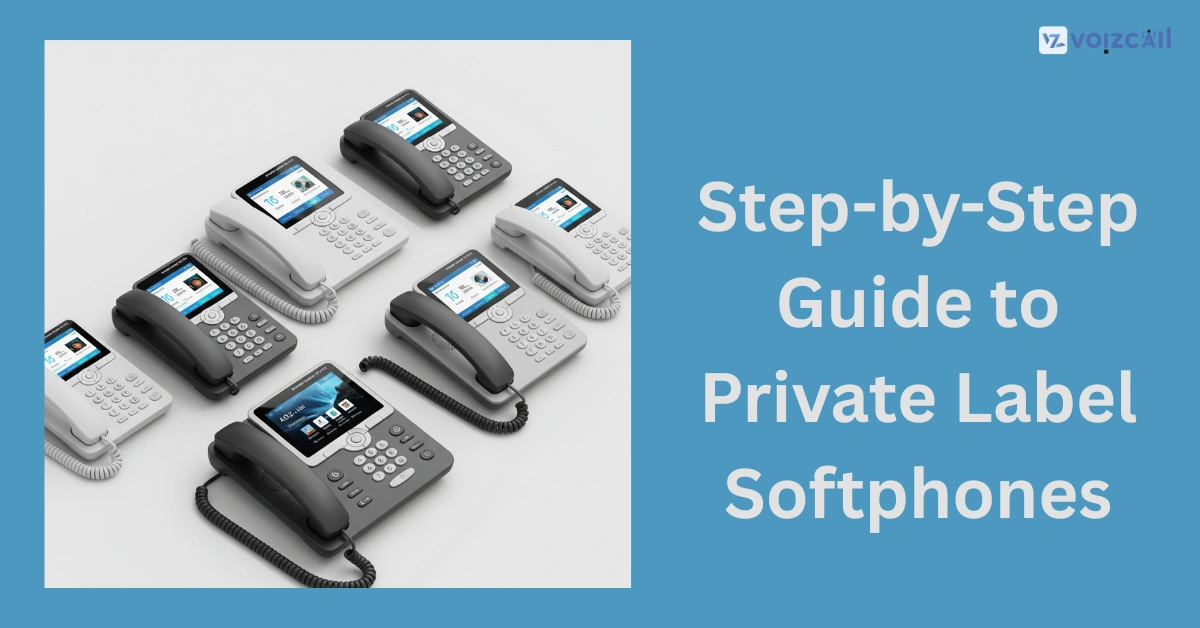


20/Jun/2025
You run a VoIP service, or maybe a call center business, and every time your clients make a call, they see someone else’s logo on the softphone.
That’s lost branding opportunity.
If you're serious about growth, it's time to consider a private label softphone—a communication app branded completely under your name. No third-party logos, no outside branding. Just your business, your look, your rules.
In this guide, we’ll walk you through how to get started with private label softphones, in simple steps even non-techies can understand. Let’s go!
What Is a Private Label Softphone?
A private label softphone is a voice calling app (like a mobile or desktop dialer) that’s built by someone else—but fully branded and customized to look like your own product.
You get to:
Add your logo and colors
Customize features
Integrate with your systems (like CRM or billing)
Call / Email for Sales Inquiry Today
Offer it to your users as if you built it from scratch
This is especially powerful for VoIP providers, cloud call centers, or startups that want to look big from day one—without spending a fortune on development.
Step-by-Step: How to Set Up Your Private Label Softphone
Step 1: Choose a Softphone Provider
There are many companies offering white-label or private label VoIP softphones. Look for one that:
Supports iOS, Android, Windows, and Mac
Offers VoIP encryption and security
Allows CRM and cloud PBX integration
Supports cloud-hosted call center environments
Tip: If you already run a SIP-based or cloud PBX system, make sure the softphone supports your backend infrastructure.
Step 2: Pick Your Features
Modern softphones can do more than just voice calls. You can choose:
Call hold, transfer, and recording
Video calling
Chat and messaging
Voicemail-to-email
Auto-provisioning
Multi-language support
Cloud-hosted call center integration
Remember, you don’t need all the features—just the ones that fit your business model.
Step 3: Customize Branding
Now the fun part: making the app yours!
Upload your logo and icon
Choose your brand colors and fonts
Customize welcome screens and menus
Add your support or contact info
Just like switching from on-premise call centers to cloud-based solutions, this gives your communication setup a more modern, brand-aligned experience.
Step 4: Add Integrations (Optional but Powerful)
Want to go further? Connect your private label softphone to:
Your CRM (e.g., Zoho, Vtiger, Salesforce)
Billing platform
SMS gateway
Hosted PBX or cloud-based call center backend
This step takes your tool from "just a dialer" to a smart communication hub.
Step 5: Test & Launch
Before rolling it out to customers or agents, test the softphone thoroughly:
Make internal calls
Check voice quality, echo cancellation, and video
Ensure all features (like call hold/transfer) work
Test push notifications on mobile devices
Once you're satisfied, you’re ready to launch it to your users!
Real-Life Example: A Small VoIP Startup Scales Fast
A small VoIP reseller from Pune used to offer third-party softphones to customers. But users were confused about the branding—and trust was low.
After switching to a private label softphone:
Customers saw their brand on every call
Support tickets dropped (no more “who made this app?” questions)
Sales increased by 35% thanks to better user experience
Why Private Label Softphones Make Sense Today
Just like businesses are choosing cloud-based call centers over on-premise systems, private label softphones offer:
|
Benefit |
Traditional Softphone |
Private Label Softphone |
|
Branding |
Vendor branding |
100% your brand |
|
Custom Features |
Limited |
Fully customizable |
|
Cost to Build |
High (if custom-developed) |
Low (white-label solution) |
|
Launch Time |
Months |
Days to weeks |
|
Customer Trust & Loyalty |
Lower |
Higher (looks like your product) |
Final Thoughts: Ready to Take Control?
If you’re tired of promoting someone else’s app or want to offer a sleek, branded calling solution to your users or team, a private label softphone is the way to go.
It’s flexible, affordable, and scales perfectly with cloud-based call center environments. Whether you’re a VoIP startup, a remote team, or a support service provider—this is your next smart move.